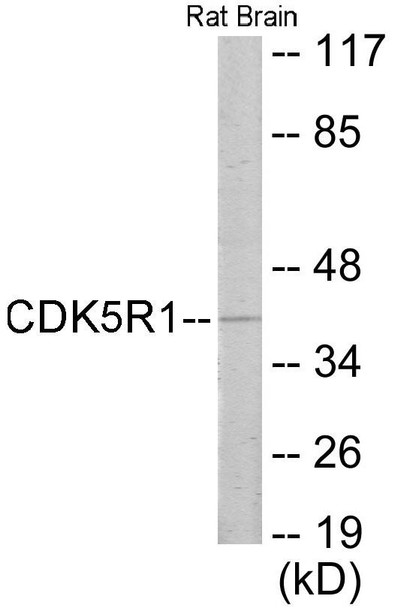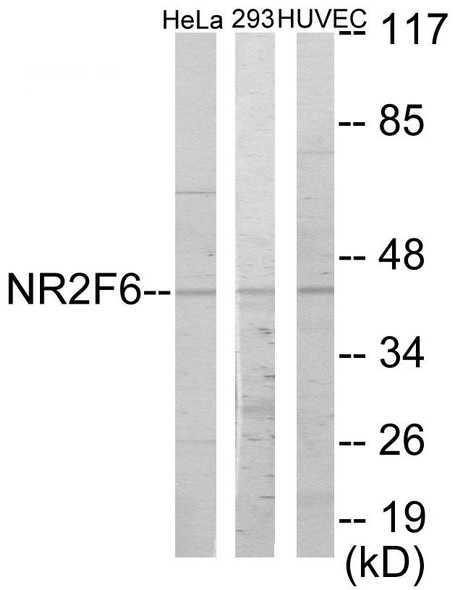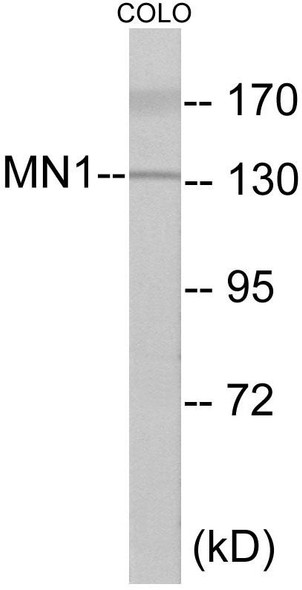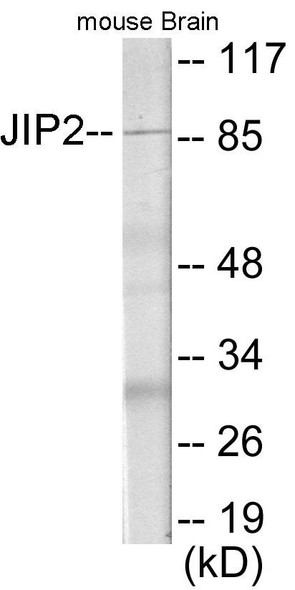Description
CDK5R1 Colorimetric Cell-Based ELISA
The CDK5R1 Colorimetric Cell-Based ELISA Kit is a superior tool for analyzing the expression levels of CDK5R1 in cell lysates. This innovative kit offers high sensitivity and specificity, providing researchers with accurate and consistent results for their studies. CDK5R1, also known as cyclin-dependent kinase 5 regulatory subunit 1, is a key regulator of neuronal processes and a potential target for neurodegenerative diseases research.
By utilizing the CDK5R1 Colorimetric Cell-Based ELISA Kit, researchers can gain valuable insights into the role of CDK5R1 in various cellular processes and disease states. This kit is designed for ease of use and convenience, making it an essential tool for any laboratory conducting research on CDK5R1 and its implications in neurobiology and neurodegenerative disorders.
| Product Name: | CDK5R1 Colorimetric Cell-Based ELISA |
| Product Code: | CBCAB00215 |
| ELISA Type: | Cell-Based |
| Target: | CDK5R1 |
| Reactivity: | Human, Mouse, Rat |
| Dynamic Range: | > 5000 Cells |
| Detection Method: | Colorimetric 450 nmStorage/Stability:4°C/6 Months |
| Format: | 96-Well Microplate |
The CDK5R1 Colorimetric Cell-Based ELISA Kit is a convenient, lysate-free, high throughput and sensitive assay kit that can detect CDK5R1 protein expression profile in cells. The kit can be used for measuring the relative amounts of CDK5R1 in cultured cells as well as screening for the effects that various treatments, inhibitors (ie siRNA or chemicals), or activators have on CDK5R1.
Qualitative determination of CDK5R1 concentration is achieved by an indirect ELISA format. In essence, CDK5R1 is captured by CDK5R1-specific primary antibodies while the HRP-conjugated secondary antibodies bind the Fc region of the primary antibody. Through this binding, the HRP enzyme conjugated to the secondary antibody can catalyze a colorimetric reaction upon substrate addition. Due to the qualitative nature of the Cell-Based ELISA, multiple normalization methods are needed:
| 1. | A monoclonal antibody specific for human GAPDH is included to serve as an internal positive control in normalizing the target absorbance values. |
| 2. | Following the colorimetric measurement of HRP activity via substrate addition, the Crystal Violet whole-cell staining method may be used to determine cell density. After staining, the results can be analysed by normalizing the absorbance values to cell amounts, by which the plating difference can be adjusted. |
| Database Information: | Gene ID: 8851, UniProt ID: Q15078, OMIM: 603460, Unigene: Hs.500015 |
| Gene Symbol: | CDK5R1 |
| Sub Type: | None |
| UniProt Protein Function: | CDK5R1: activator of cyclin-dependent kinase 5 (CDK5). Required for proper development of the central nervous system. The p35 form of this protein is cleaved by calpain, generating a p25 form, resulting in the prolonged activation and relocalization of the CDK5 from the cell periphery to nuclear and perinuclear regions. The p25 form accumulates in the brain neurons of patients with Alzheimer's disease, leading to aberrantly phosphorylated forms of the microtubule-associated protein tau, which contributes to Alzheimer's disease. |
| UniProt Protein Details: | Protein type:Protein kinase, regulatory subunit Chromosomal Location of Human Ortholog: 17q11.2 Cellular Component: cyclin-dependent protein kinase 5 activator complex; contractile fiber; intracellular membrane-bound organelle; dendrite; postsynaptic density; dendritic spine; cytosol; nucleoplasm; growth cone; membrane; cell soma; perinuclear region of cytoplasm; axon; cytoplasm; plasma membrane; nucleus; neuromuscular junction Molecular Function:protein serine/threonine kinase activator activity; protein binding; ephrin receptor binding; cadherin binding; cyclin-dependent protein kinase activity; cyclin-dependent protein kinase 5 activator activity; kinase activity; calcium ion binding; protein kinase binding; protein kinase activity Biological Process: superior olivary nucleus maturation; axon guidance; acetylcholine receptor signaling, muscarinic pathway; regulation of neuron differentiation; hippocampus development; axonal fasciculation; peptidyl-threonine phosphorylation; rhythmic process; neuron migration; negative regulation of axon extension; neuron differentiation; cell proliferation; embryonic development; peptidyl-serine phosphorylation; ionotropic glutamate receptor signaling pathway; positive regulation of neuron apoptosis; regulation of actin cytoskeleton organization and biogenesis; ephrin receptor signaling pathway; cerebellum development; neuron adhesion; brain development; regulation of cyclin-dependent protein kinase activity; negative regulation of transcription, DNA-dependent; neurite development; layer formation in the cerebral cortex; serine phosphorylation of STAT3 protein |
| NCBI Summary: | The protein encoded by this gene (p35) is a neuron-specific activator of cyclin-dependent kinase 5 (CDK5); the activation of CDK5 is required for proper development of the central nervous system. The p35 form of this protein is proteolytically cleaved by calpain, generating a p25 form. The cleavage of p35 into p25 results in relocalization of the protein from the cell periphery to nuclear and perinuclear regions. P25 deregulates CDK5 activity by prolonging its activation and changing its cellular location. The p25 form accumulates in the brain neurons of patients with Alzheimer's disease. This accumulation correlates with an increase in CDK5 kinase activity, and may lead to aberrantly phosphorylated forms of the microtubule-associated protein tau, which contributes to Alzheimer's disease. [provided by RefSeq, Jul 2008] |
| UniProt Code: | Q15078 |
| NCBI GenInfo Identifier: | 2498217 |
| NCBI Gene ID: | 8851 |
| NCBI Accession: | Q15078.1 |
| UniProt Secondary Accession: | Q15078,Q5U0G3, E1P664, |
| UniProt Related Accession: | Q15078 |
| Molecular Weight: | 307 |
| NCBI Full Name: | Cyclin-dependent kinase 5 activator 1 |
| NCBI Synonym Full Names: | cyclin-dependent kinase 5, regulatory subunit 1 (p35) |
| NCBI Official Symbol: | CDK5R1 |
| NCBI Official Synonym Symbols: | p23; p25; p35; CDK5R; NCK5A; CDK5P35; p35nck5a |
| NCBI Protein Information: | cyclin-dependent kinase 5 activator 1; CDK5 activator 1; neuronal CDK5 activator; TPKII regulatory subunit; regulatory partner for CDK5 kinase; tau protein kinase II 23kDa subunit; cyclin-dependent kinase 5 regulatory subunit 1 |
| UniProt Protein Name: | Cyclin-dependent kinase 5 activator 1 |
| UniProt Synonym Protein Names: | Cyclin-dependent kinase 5 regulatory subunit 1; TPKII regulatory subunitCleaved into the following 2 chains:Cyclin-dependent kinase 5 activator 1, p35; p35; Cyclin-dependent kinase 5 activator 1, p25; p25Alternative name(s):Tau protein kinase II 23 kDa subunit; p23 |
| Protein Family: | Cyclin-dependent kinase 5 activator |
| UniProt Gene Name: | CDK5R1 |
| UniProt Entry Name: | CD5R1_HUMAN |
| Component | Quantity |
| 96-Well Cell Culture Clear-Bottom Microplate | 2 plates |
| 10X TBS | 24 mL |
| Quenching Buffer | 24 mL |
| Blocking Buffer | 50 mL |
| 15X Wash Buffer | 50 mL |
| Primary Antibody Diluent | 12 mL |
| 100x Anti-Phospho Target Antibody | 60 µL |
| 100x Anti-Target Antibody | 60 µL |
| Anti-GAPDH Antibody | 60 µL |
| HRP-Conjugated Anti-Rabbit IgG Antibody | 12 mL |
| HRP-Conjugated Anti-Mouse IgG Antibody | 12 mL |
| SDS Solution | 12 mL |
| Stop Solution | 24 mL |
| Ready-to-Use Substrate | 12 mL |
| Crystal Violet Solution | 12 mL |
| Adhesive Plate Seals | 2 seals |
The following materials and/or equipment are NOT provided in this kit but are necessary to successfully conduct the experiment:
- Microplate reader able to measure absorbance at 450 nm and/or 595 nm for Crystal Violet Cell Staining (Optional)
- Micropipettes with capability of measuring volumes ranging from 1 µL to 1 ml
- 37% formaldehyde (Sigma Cat# F-8775) or formaldehyde from other sources
- Squirt bottle, manifold dispenser, multichannel pipette reservoir or automated microplate washer
- Graph paper or computer software capable of generating or displaying logarithmic functions
- Absorbent papers or vacuum aspirator
- Test tubes or microfuge tubes capable of storing ≥1 ml
- Poly-L-Lysine (Sigma Cat# P4832 for suspension cells)
- Orbital shaker (optional)
- Deionized or sterile water
*Note: Protocols are specific to each batch/lot. For the correct instructions please follow the protocol included in your kit.
| Step | Procedure |
| 1. | Seed 200 µL of 20,000 adherent cells in culture medium in each well of a 96-well plate. The plates included in the kit are sterile and treated for cell culture. For suspension cells and loosely attached cells, coat the plates with 100 µL of 10 µg/ml Poly-L-Lysine (not included) to each well of a 96-well plate for 30 minutes at 37°C prior to adding cells. |
| 2. | Incubate the cells for overnight at 37°C, 5% CO2. |
| 3. | Treat the cells as desired. |
| 4. | Remove the cell culture medium and rinse with 200 µL of 1x TBS, twice. |
| 5. | Fix the cells by incubating with 100 µL of Fixing Solution for 20 minutes at room temperature. The 4% formaldehyde is used for adherent cells and 8% formaldehyde is used for suspension cells and loosely attached cells. |
| 6. | Remove the Fixing Solution and wash the plate 3 times with 200 µL 1x Wash Buffer for five minutes each time with gentle shaking on the orbital shaker. The plate can be stored at 4°C for a week. |
| 7. | Add 100 µL of Quenching Buffer and incubate for 20 minutes at room temperature. |
| 8. | Wash the plate 3 times with 1x Wash Buffer for 5 minutes each time. |
| 9. | Add 200 µL of Blocking Buffer and incubate for 1 hour at room temperature. |
| 10. | Wash 3 times with 200 µL of 1x Wash Buffer for 5 minutes each time. |
| 11. | Add 50 µL of 1x primary antibodies (Anti-CDK5R1 Antibody and/or Anti-GAPDH Antibody) to the corresponding wells, cover with Parafilm and incubate for 16 hours (overnight) at 4°C. If the target expression is known to be high, incubate for 2 hours at room temperature. |
| 12. | Wash 3 times with 200 µL of 1x Wash Buffer for 5 minutes each time. |
| 13. | Add 50 µL of 1x secondary antibodies (HRP-Conjugated AntiRabbit IgG Antibody or HRP-Conjugated Anti-Mouse IgG Antibody) to corresponding wells and incubate for 1.5 hours at room temperature. |
| 14. | Wash 3 times with 200 µL of 1x Wash Buffer for 5 minutes each time. |
| 15. | Add 50 µL of Ready-to-Use Substrate to each well and incubate for 30 minutes at room temperature in the dark. |
| 16. | Add 50 µL of Stop Solution to each well and read OD at 450 nm immediately using the microplate reader. |
(Additional Crystal Violet staining may be performed if desired – details of this may be found in the kit technical manual.)






